La poda es una técnica de cuidado crucial que fomenta el crecimiento y puede ayudar a sus plantas a mantener una excelente salud al cortar ramas o tallos muertos o demasiado grandes. Cortar el follaje de las plantas, jóvenes o maduras, que viven en interiores o exteriores, requiere tener en cuenta las estaciones.
Es mejor podar cuando una planta está inactiva, y aunque la poda de verano generalmente se prefiere por sus efectos restauradores, algunas plantas aprovechan mejor el verano para curar las heridas de la poda. Recortar en la temporada más calurosa podría abrumarlos. Sigue leyendo para saber de qué plantas debes esconder las tijeras en verano.
9 plantas que no debes podar en verano
1. Potentilla
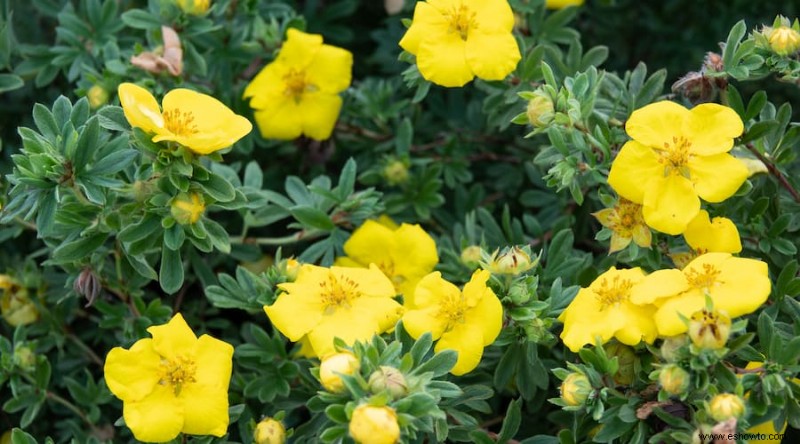
Originario del hemisferio norte, el arbusto potentilla produce principalmente flores amarillas. La planta prospera a pleno sol o sombra ligera, y es mejor plantarla en un suelo bien drenado. Como su temporada de crecimiento alcanza su punto máximo a fines de la primavera, no debe podarlo en verano.
Más bien, pode los arbustos de potentilla a principios de la primavera o el otoño eliminando del 50 al 75 por ciento de su follaje superior. Potentilla es un arbusto resistente, y sus flores pueden cuidarse solas, por lo que no hay necesidad de podarlas. Espere hasta que la planta tenga al menos tres años para asegurarse de que sea lo suficientemente fuerte para soportar la poda.
2. Arbusto de humo
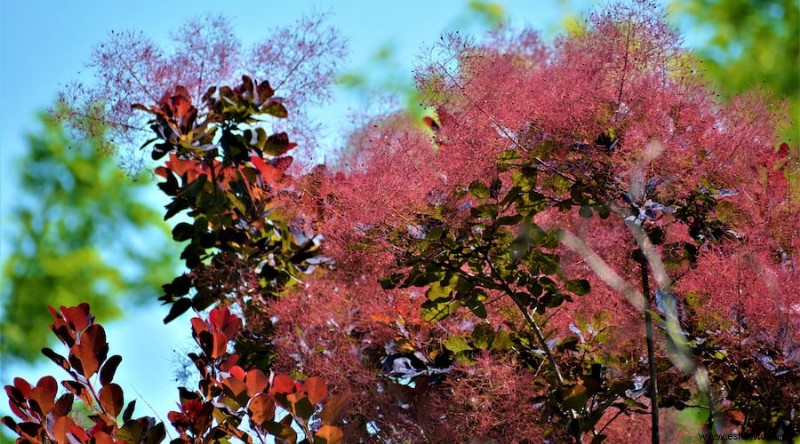
El arbusto de humo es un arbusto ornamental que cuenta con hojas moradas y amarillas con flores que se hinchan como nubes de humo. Su exhibición desconcertante puede volverse rebelde si no se poda. La poda anual de árboles de humo ayuda a que el arbusto sea fuerte y más compacto.
Como un árbol que florece en verano, el arbusto de humo debe podarse a fines del invierno o principios de la primavera, mientras que la planta está mayormente inactiva. Para un recorte serio, el final del invierno es ideal. Para remodelar, pode entre seis y ocho pulgadas sobre el suelo. Sin embargo, sacrificará flores para la próxima temporada de floración.
3. Hortensia
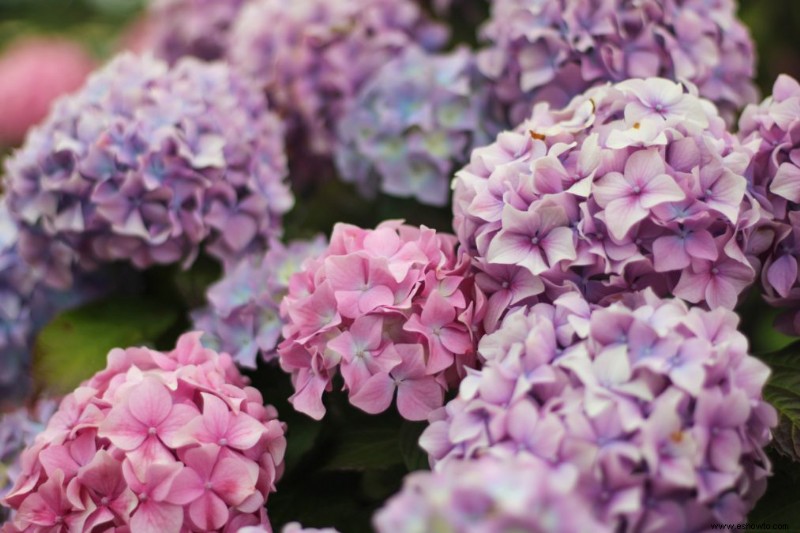
Las hortensias son una gran variedad de plantas con flores con especies que difieren en sus preferencias de poda. Dos especies de hortensias no están interesadas en ser podadas en verano; estas son Panicle y Smooth Hydrangeas. Entonces, si se pregunta por qué sus hortensias no florecen, la poda en el momento equivocado podría ser la razón.
a. Panícula
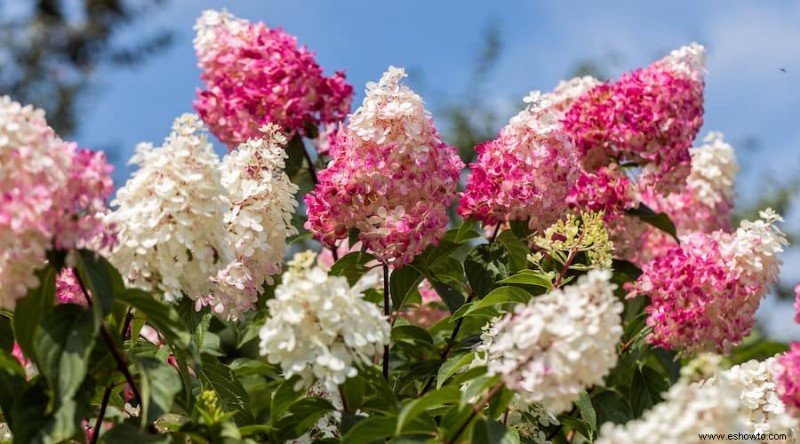
Las hortensias tipo panícula son hermosas y resistentes, con flores blancas que maduran en rosa. Pueden soportar temperaturas tan bajas como -30 grados Fahrenheit. Estas hortensias son nativas de China y Japón y se introdujeron en el oeste en 1862. Pode las panículas a fines del invierno para evitar que crezcan demasiado.
b. Suave
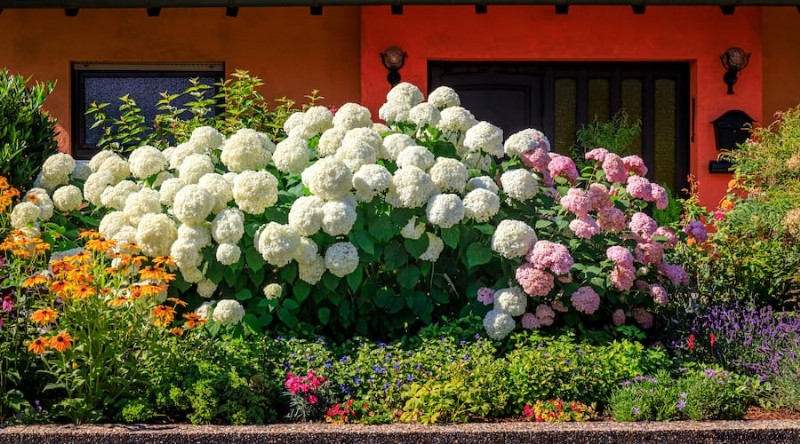
Originarias de América del Norte, las hortensias suaves florecen en sombras claras y florecen desde mediados del verano hasta el otoño. Sus flores redondeadas de color blanco cremoso pueden extenderse por todas partes y, si se mantienen en condiciones ideales, este arbusto puede vivir hasta 20 años.
La tendencia de esta planta de hortensia a extenderse significa que puede crecer demasiado, por lo que podarla entre principios y finales de la primavera antes de que crezca por completo es una forma segura de mantenerla.
4. Begonia
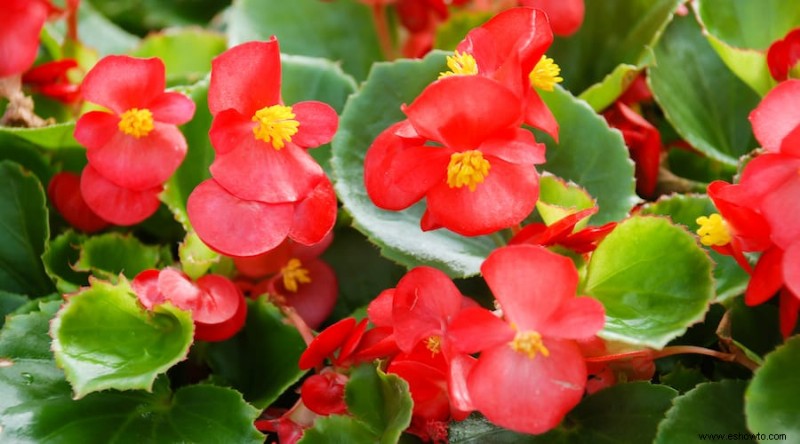
Las begonias son un tipo diverso de planta, con orígenes tropicales y subtropicales. Las personas que viven en climas más cálidos pueden podar las plantas de begonias en primavera, mientras que las personas que viven en climas fríos pueden podar estas plantas en otoño para que quepan en el interior donde puedan vivir con seguridad durante el invierno. Aquí hay una guía detallada sobre las begonias para aprender a cuidar estas bellezas.
5. Gloria de la mañana
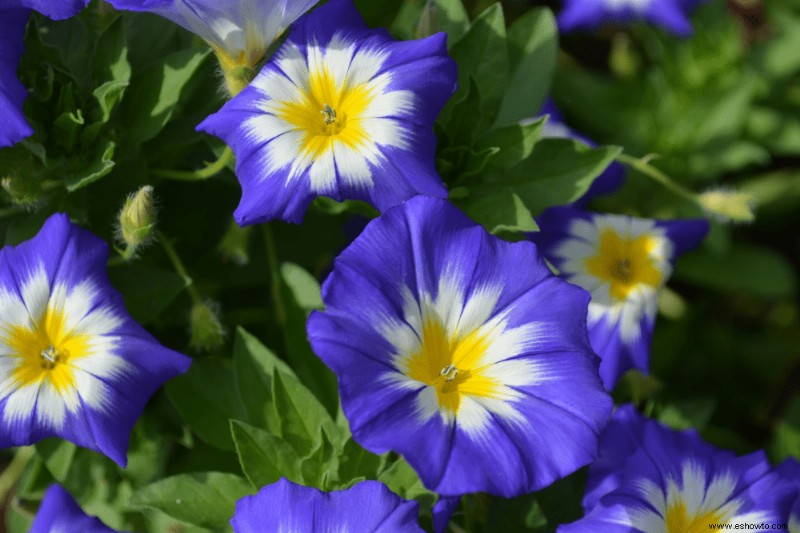
Adoradas tanto por los polinizadores como por los jardineros, las glorias de la mañana son apreciadas por sus hojas en forma de corazón y sus fragantes flores en forma de trompeta. Sus esbeltas enredaderas pueden colocarse sobre pérgolas o arcos, lo que demuestra su cualidad embellecedora. Usually, morning glories don’t require pruning unless frost has killed their foliage. If your plant overgrows, prune it in autumn, at the end of the blooming season.
6. Crepe Myrtle
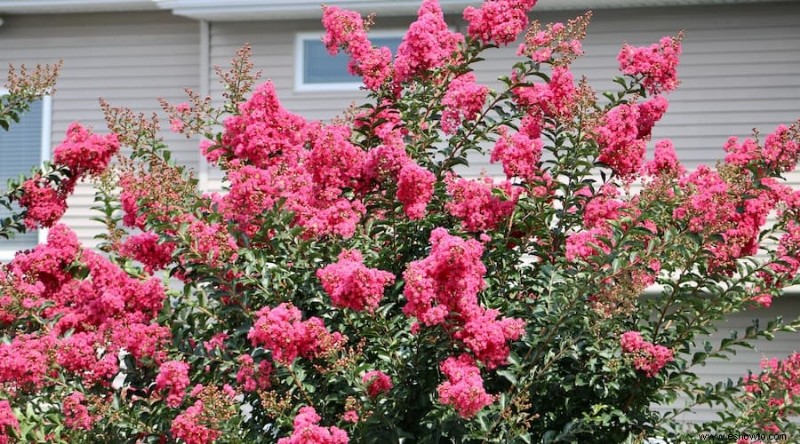
With dark green foliage and paper-thin flora, the crepe myrtle is a small shrub that thrives in full sun and a variety of soils. It’s best to prune this shrub sparingly in winter or early spring. Pruning in late winter is especially easy because the shrub is leafless, making it easier to see all of its branches.
7. Rhododendrons
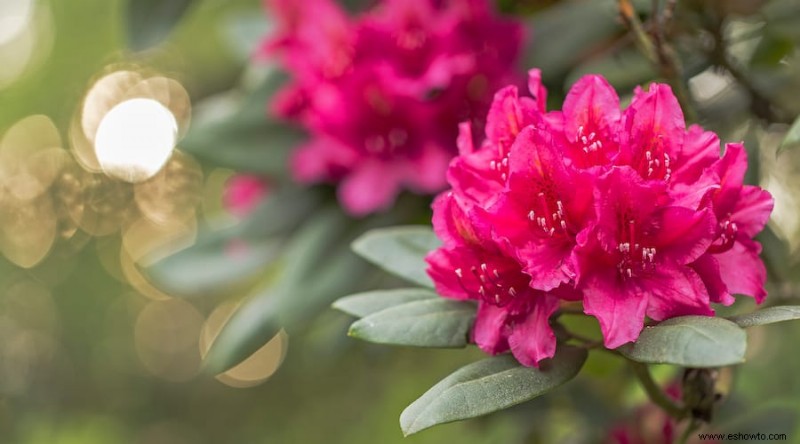
Rhododendrons are a fairly low-maintenance bush that loves acidic soil and partial shade. It has over a thousand species, both evergreen and deciduous. While pruning in the spring is standard procedure for most gardeners, as the bush will have finished flowering by then, sometimes the ideal time for pruning rhododendrons is late winter, while the plant is dormant. If you prune in summer, the bush will hardly flower in the next growing season.
8. Oleander
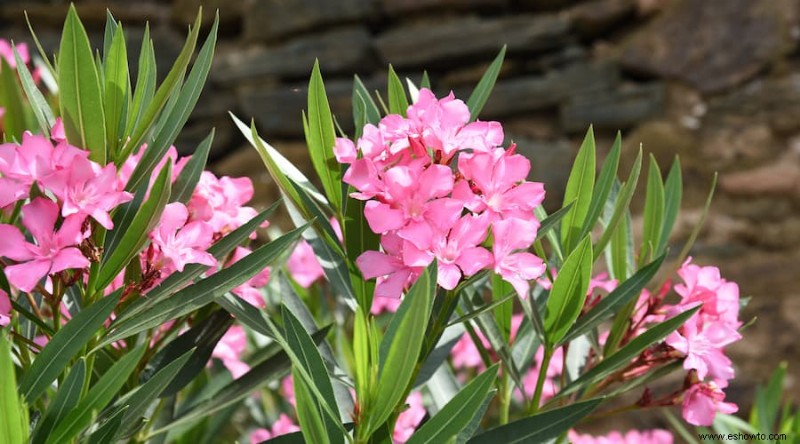
Nerium oleander, or simply oleander, is a beautiful but toxic shrub that blooms nearly year-round. The hardy plant produces star-shaped blossoms and has a carefree growing habit due to its extensive root system, which can make it invasive if not maintained. Countering the oleander’s beauty is its toxicity. The whole plant is toxic to the touch and especially noxious if one accidentally inhales the smoke of burning oleander. Regarding pruning, trim Oleanders in late winter or early spring, and don’t forget to thin out crowded shoots and remove dead or damaged growth.
9. Butterfly Bush
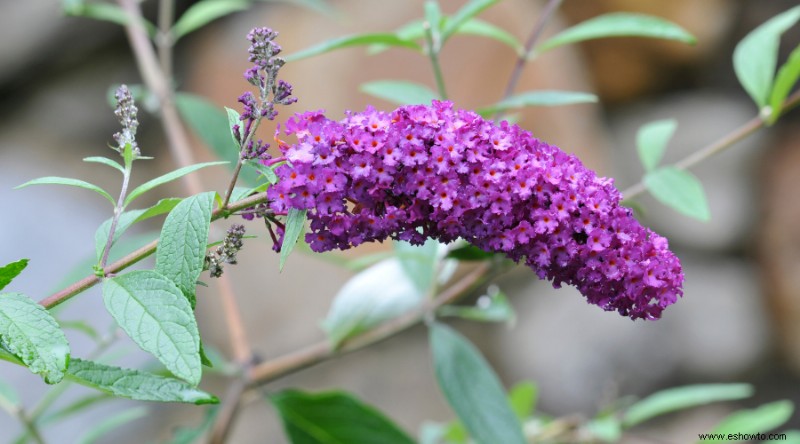
Prized for their extending cluster of buds, butterfly bushes are great at attracting pollinators, especially butterflies. Since they bloom between late spring and summer, deadheading is an important part of caring for the plant. By removing the spent flowers, you will encourage a new set of blossoms in the same season. Butterfly bushes don’t need to be pruned every year. Trim them when they overgrow the space you’ve allotted them. Most gardeners prune them severely between late winter and early spring to encourage new growth and abundant flowering.
The Benefits of Pruning
Out with the old and in with the new; pruning truly captures the spirit of this phrase. While this article details which plants you shouldn’t prune in summer, understanding why you should prune is the first step to apprehending how to prune correctly.
Pruning:
- Invigorates rangy plants with weak growth.
- Reshapes plants to grow in the desired manner.
- Helps reconstruct the structure of a plant for more circulation or exposure to light.
- Encourages more flowering.
- Reduces or controls the number of flowers and fruits.
- Removes diseased limbs.
- Maintains ornamental forms, e.g. topiary.
Pruning Mistakes to Avoid

1. Not Planning Before You Prune
It’s important to have a particular goal when pruning. A simple strategy to follow involves the three Ds:pruning parts that are dead, diseased, and dying.
2. Improper Pruning
Proper pruning minimizes damage and allows a plant’s wounds to heal faster. Improper cuts include flush cuts and stub cuts. Flush cuts happen when you cut too close to the trunk of a tree, which leaves a large wound that won’t heal properly. Stub cuts involve cutting too far from the trunk, which makes it vulnerable to decay.
3. Heavy Pruning During Growing Season
The growing season is usually between mid-spring to late summer. You could leave your plant stressed, starved, and parched by pruning during this period. Trees use leaves to make food, and pruning them during their growing season could cause them to starve.
4. Using Blunt Tools
Never underestimate the damage blunt shears can do to a plant. Rough cuts often lead to shredded or frayed stems and bark, which causes larger wounds. For safe and easier pruning, use sharpened tools.
5. Not Topping Carefully
Topping involves cutting the top part off of a tree or shrub. Its utility lies in maintaining plants that grow out of their allocated space. However, this process can cause plant stress and create an imbalance in appearance and weight, which leads to over-pruning. To avoid topping, consider the standard height of the plant in its maturity before planting it.
6. Over-Pruning in General
Every cut matters, and over-pruning at any time of the year, whether your plant is growing or dormant, can cause stress, making it vulnerable to disease. Cuts are wounds, and each stem or branch lost was a source of sustenance for the plant. The lower the supply of resources, the lower the rate of the plant’s photosynthetic capacity, which could lead to its death.
En resumen
Since pruning is a process of wounding a plant, it’s natural that the pruned plant needs enough time to heal its cuts before it can flower or regrow leaves. Since summer is the usual growing season, it’s only fair that you prune your plants well before the growing season, so by the time summer rolls by, they’ve healed before their new foliage begins to grow.
Hopefully, this article helped you with all the information you need about pruning your plants! Please leave a comment down below if you have any questions. If you enjoyed this article, please don’t forget to share it with your family and friends.
¡Feliz jardinería!

